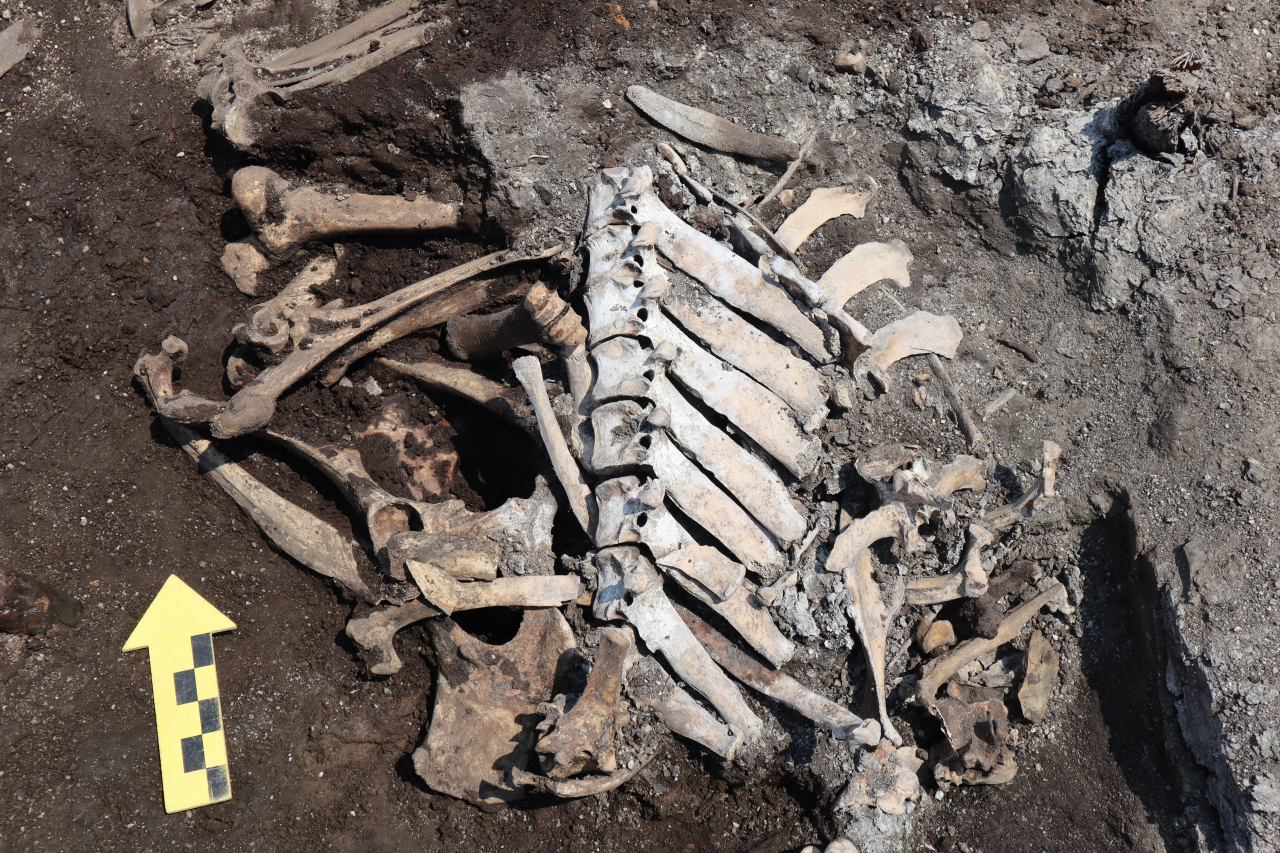 |
This photo shows cattle bones found at an area near Jongmyo in Jongno-gu, central Seoul. (Han Ul Research Institute of Cultural Heritage) |
A pile of cattle bones presumed to date back to the Joseon era (1392-1910) has been discovered at an area near Jongmyo -- a special shrine for the deceased kings and queens of Joseon -- in Jongno-gu, central Seoul, according to a research institute Wednesday.
A Han Ul Research Institute of Cultural Heritage official explained that this is not the first time that the organization has found cattle bones within Hanyangdoseong -- also known as the Seoul City Wall -- area, but that the bones found in previously had been either broken or chopped.
“We have never seen a case where so many cattle bones were found in a single site intact,” the official added.
Han Ul Research Institute of Cultural Heritage is Korea Heritage Service’s nonprofit organization responsible for this excavation.
Korea Heritage Service confirmed that the cattle bone-laying pit was found during Seoul City’s urban environment maintenance project in Jongno-gu.
“To prevent the unknown cultural heritage and artifacts from being destroyed, an excavation process is required before developing or maintaining the assigned districts. And we were able to find the one-meter-deep pits during the latest excavation in Jongno-gu,” a Han Ul Research Institute of Cultural Heritage researcher told The Korea Herald.
A total of 10 pits and bones -- assumed to be of seven to eight cattle -- were found.
The examination of the bones is expected to reveal more information about Joseon-period cattle ranging from size, characteristics, species and some of the differences from modern cows.
“Several speculations have arisen as the excavation site is close to Jongmyo and Majeongyo, an old horse and cattle market. There are many possibilities, but accurate interpretation can be made after a thorough analysis,” the researcher quoted another expert as saying.
The excavated cattle bones are scheduled to be sent to the National Research Institute of Cultural Heritage in Gyeongju, North Gyeongsang Province, for examination.







![[Herald Interview] How Gopizza got big in India](http://res.heraldm.com/phpwas/restmb_idxmake.php?idx=644&simg=/content/image/2024/11/20/20241120050057_0.jpg)